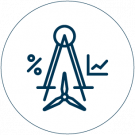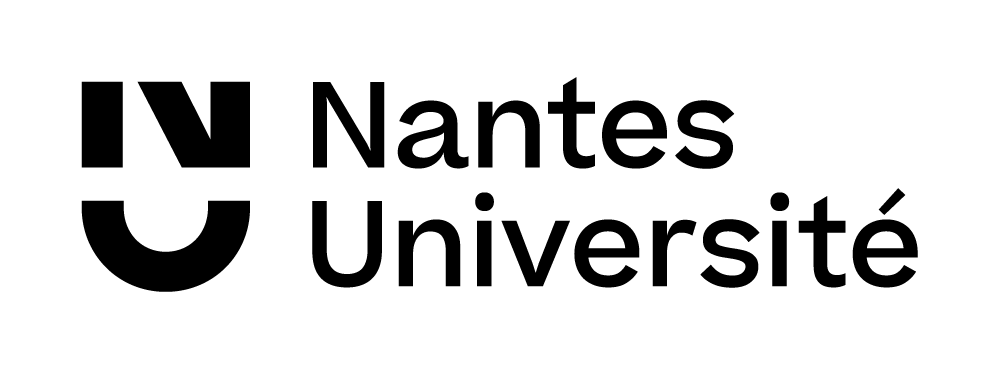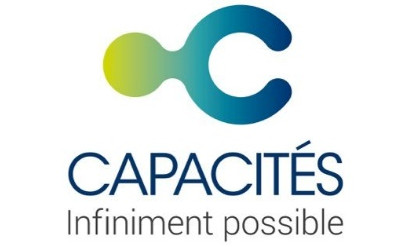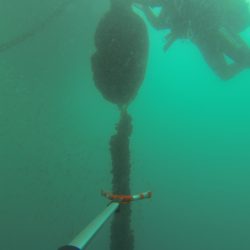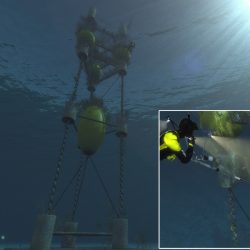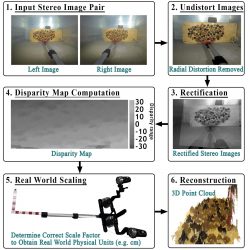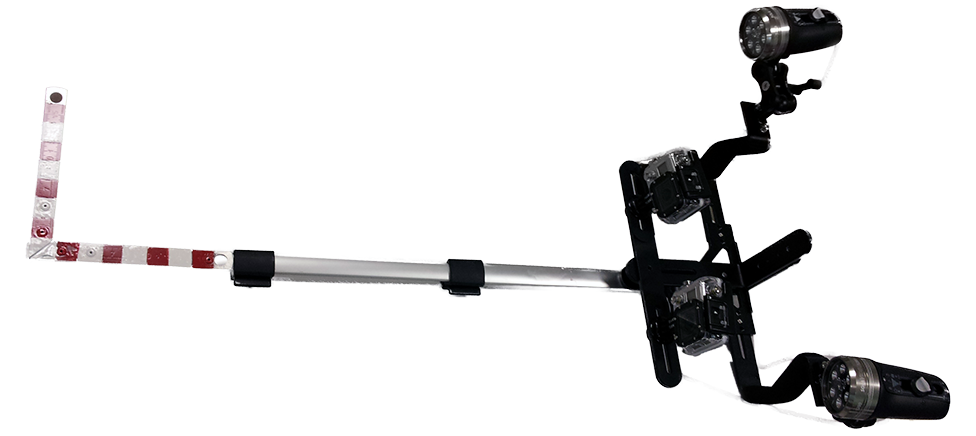
Key characteristics
Self-contained unit –this device is capable of reconstructing fully scaled 3D models thanks to the on-board measuring stick and the two artificial light sources on the device mean that it can operate in low-light conditions, such as those typically encountered during underwater inspections.
Redundancy – If for some reason it is not possible to use stereo imaging to automatically recover 3D models, the on-board measuring stick, which is always visible in the acquired imagery, allows us to estimate the physical size of objects in the scene nonetheless, as long as the measuring stick is held close to the object of interest.
In-depth testing – We developed an experimental evidence base around several lighting conditions and several distances between the cameras and the subject in order to characterize the performance of our stereo system (in terms of producing good 3D reconstruction results).
Equipment
The Université de Nantes Underwater stereo camera consists of two GoPro cameras, two waterproof artificial lights, and an adjustable measuring stick. The two GoPro cameras simultaneously photograph a scene from slightly different perspectives. By taking photographs of a target from at least two different vantage points, 3D information of the scene becomes encoded in the imagery.
Services
This device is intended to facilitate inspections of all offshore and marine structures including marine renewable energy devices.
Example of MRE applications
This device can be used for quantifying cracks and visible damage forms, such as corrosion, which appear on the surface of MRE structures. However, to leverage the full potential of this device, we should look at 3D imaging. The 3D information that is captured by this device can be used for volumetric measurements, documentation, and presentation to the general public.
One specific application concerns measuring the shape of structural members that have been colonized by marine growth. Marine growth significantly increases the diameter and roughness of structural members. This introduces several problems; most notably, it increases drag forces and creates unpredictable hydrodynamic instabilities. These factors often cause a loss in structural performance and reliability, leading to shortened lifespans for MRE structures.
Owners/operators of these structures, therefore, have a keen interest in monitoring the progression of marine growth so that they can choose the best times to carry out costly cleaning regimes, and so that they have more reliable estimates of the loading on a structure. This is useful when assessing a structure’s eligibility for requalification schemes, which ultimately, can prolong a structure’s in-service life. The diameter and roughness vary around and among structural components, and require full 3D shape of the marine growth to be computed.
